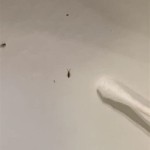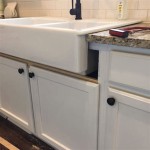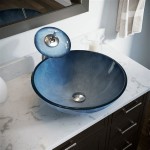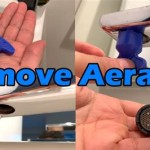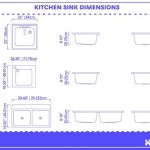Kitchen Sink Water Line Connections
Installing or replacing water lines under a kitchen sink requires careful attention to detail to ensure a leak-free connection. Water supply lines come in a variety of materials, each with its pros and cons. Here's a guide to help you understand the different types of water line connections and how to install them properly.
Types of Water Line Connections
1. Compression Fittings:Compression fittings are the most common type of water line connection. They use a ferrule, nut, and washer to create a seal. Compression fittings are relatively easy to install and are available in various sizes.
2. Push-Fit Fittings:Push-fit fittings, also known as SharkBite fittings, do not require any tools for installation. They simply push onto the pipe and create a leak-proof connection. Push-fit fittings are easy to use and are a good option for DIYers.
3. PEX Fittings:PEX (cross-linked polyethylene) fittings are made of a flexible plastic material. They are corrosion-resistant and can withstand high temperatures. PEX fittings require specialized tools for installation.
Installing Water Lines
1. Tools and Materials:To install water lines, you will need the following tools and materials:
- Adjustable wrench
- Basin wrench
- Teflon tape
- Water line fittings (compression, push-fit, or PEX)
- Water supply lines
- Pipe cutter or hacksaw
Before starting any work, shut off the water supply valves under the sink.
3. Disconnect Existing Lines:If replacing old water lines, disconnect them from the shut-off valves and faucet. Use an adjustable wrench or basin wrench to loosen the nuts and remove the lines.
4. Cut and Prepare Pipes (PEX Only):If using PEX lines, measure and cut the pipes to the desired length. Clean the ends of the pipes and remove any burrs.
5. Apply Teflon Tape:Wrap Teflon tape clockwise around the threaded ends of the water line fittings to prevent leaks.
6. Install Fittings:For compression fittings, hand-tighten the ferrule onto the pipe. Then, tighten the nut using an adjustable wrench while holding the ferrule with a basin wrench. For push-fit fittings, simply push them onto the pipe until they click into place. For PEX fittings, use a PEX crimp tool to create a secure connection.
7. Connect to Faucet and Valves:Once the fittings are installed, connect the water lines to the faucet and shut-off valves. Use an adjustable wrench to tighten the nuts.
8. Turn on Water Supply:Turn on the water supply valves and check for leaks. Tighten any loose connections as needed.

How To Connect Faucets With Supply Tubes The Home

How To Connect Faucets With Supply Tubes The Home

Kitchen Plumbing Systems Hometips
:strip_icc()/SCP_256_04-18c3d667897b469dada4e70dae1f0f21.jpg?strip=all)
Diy Outdoor Kitchen Plumbing

How To Connect Faucets With Supply Tubes The Home

Water Connect 1 2 Supply Line To 3 8 Outer Diameter Faucet Home Improvement Stack Exchange

How To Select A Water Connection For Your Faucet Or Toilet
What Size Are Faucet Supply Lines For All Faucets Tck

Kitchen Plumbing Basics How To Design

How To Install A Kitchen Faucet It All Started With Paint
